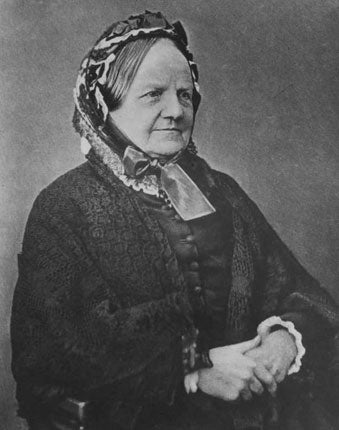Penally pudding and broiled mushrooms: the origin of Darwin's diet is unveiled

Your support helps us to tell the story
From reproductive rights to climate change to Big Tech, The Independent is on the ground when the story is developing. Whether it's investigating the financials of Elon Musk's pro-Trump PAC or producing our latest documentary, 'The A Word', which shines a light on the American women fighting for reproductive rights, we know how important it is to parse out the facts from the messaging.
At such a critical moment in US history, we need reporters on the ground. Your donation allows us to keep sending journalists to speak to both sides of the story.
The Independent is trusted by Americans across the entire political spectrum. And unlike many other quality news outlets, we choose not to lock Americans out of our reporting and analysis with paywalls. We believe quality journalism should be available to everyone, paid for by those who can afford it.
Your support makes all the difference.This month will see the publication of a collection of recipes by a highly unlikely celebrity chef: Charles Darwin's wife, Emma.
The book, Mrs. Charles Darwin's Recipe Book, gives a fascinating insight into the diet that fuelled the Victorian era's greatest naturalist. Compiled from the original notebook kept by Emma, the new book also includes instructions for cooking rice written by Charles himself. Seasonal favourites include Penally Pudding, compote of apples and Italian cream, and broiled mushrooms.
The food writers Dusha Bateson and Weslie Janeway recreated and tested all 55 recipes in the notebook after being given privileged access to archives at Cambridge University. Charles studied at Christ's College between 1828 and 1831.
Vast reams of unpublished material are being released next year to mark the bicentenary of Charles's birth. Sales of the book, which is being published by the university, will help fund research into, and the publication of, Charles's letters.
Lady Bateson said: "Emma was a very underestimated lady. She was no Delia Smith, and didn't even particularly like cooking, but had to feed Darwin, seven children and 12 servants. The book shows the methodical approach she had to collecting the recipes she used. It's good family cooking designed to feed a large household. Darwin had a lot of illnesses, and I think there's a lot of evidence that suggests he wouldn't have survived without Emma being there to prop him up and keep him going."
She added: "One of my favourites among the recipes is her suggestion for using pickled walnut mashed up in a sauce for braised beef. It adds a hint of Worcester sauce to the flavour."
Emma's culinary evolution
French ragout of mutton
*For the Ragout:
Half teaspoon flour
Salt and pepper
One-and-a-half-pounds lamb chump, boned, fat trimmed, and cut into generous pieces
One teaspoon sugar
One cup water or stock
Butter for frying
One sprig parsley, chopped
*For the turnips:
One pound young turnips, peeled and cut into half inch dice
Butter for frying
1. Season the flour with salt and pepper and place in a plastic bag with the pieces of lamb. Holding the bag closed, give it a good shake so the meat gets coated with the flour.
2. Melt the butter in an ovenproof dish with a lid. Add the lamb and fry over medium heat, turning the pieces so they get evenly browned.
3. Pour in the water or stock and stir, making sure any sticky bits from the bottom of the pan are brought into the sauce. Bring to a boil, add the sugar lump, and simmer for 1-2 minutes.
4. Put on the lid and bake in a 325F (160C) oven for about 40 minutes. Test the meat with a knife to see if is tender. If not, give it another 10-15 minutes.
5. Taste and add more salt and pepper, if needed. Sprinkle generously with chopped parsley.
6. About 20 minutes before serving, melt a good lump of butter in a large frying pan. Add the diced turnips in a single layer and fry them over medium heat, moving and turning them about so they brown but do not burn.
Season with a little salt and pepper and serve with the lamb. Though this is a very basic way of cooking turnip it is surprisingly good.
Join our commenting forum
Join thought-provoking conversations, follow other Independent readers and see their replies
Comments